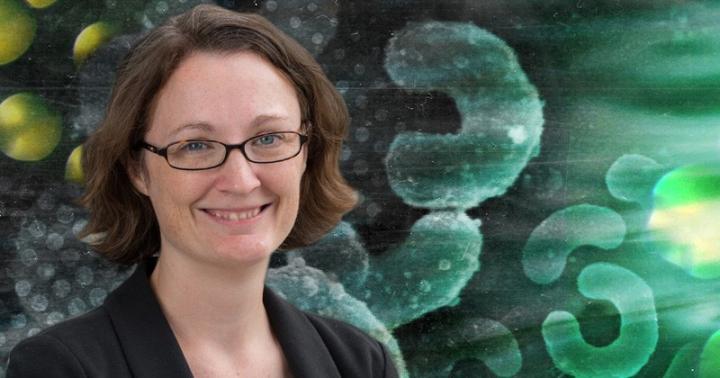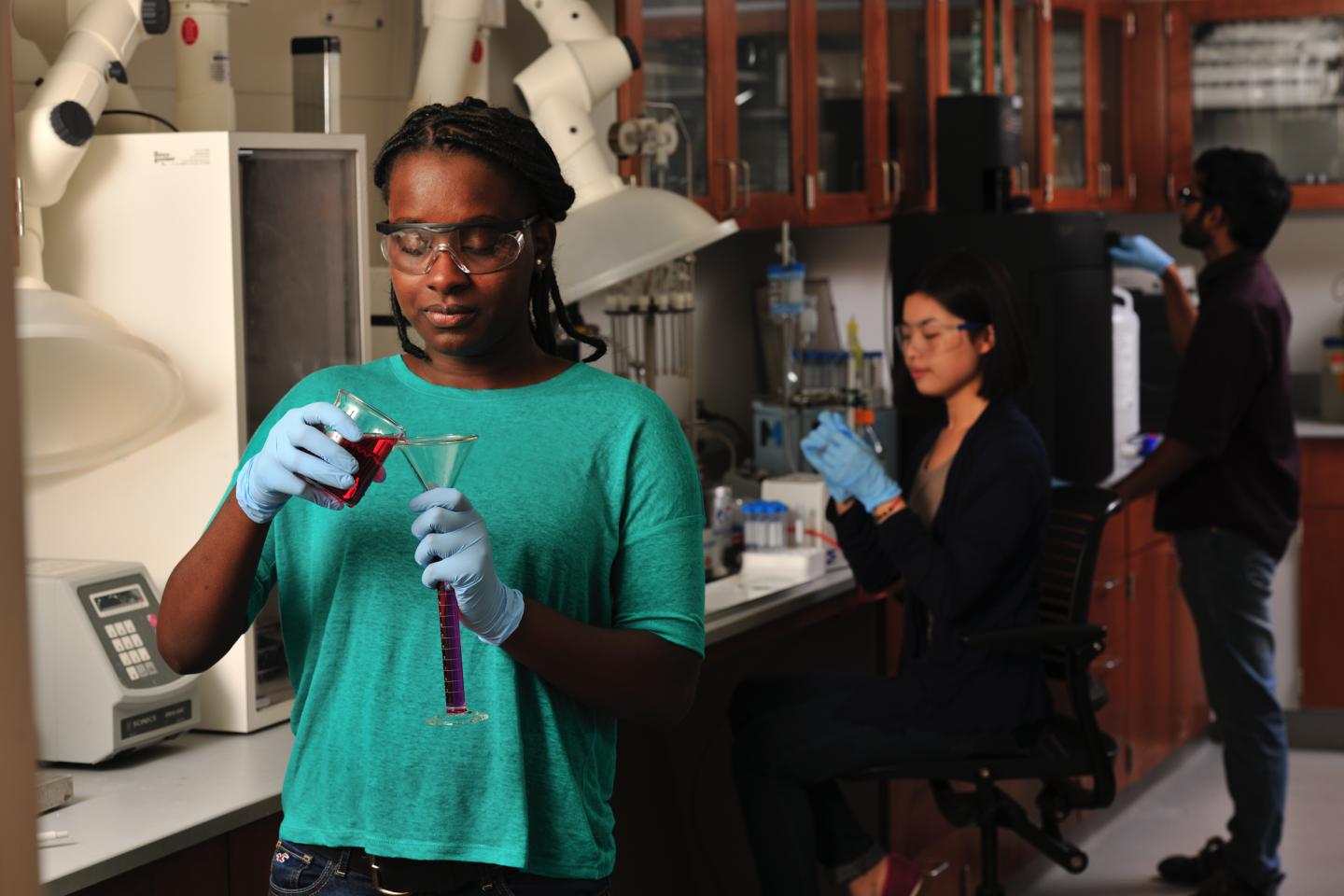Researchers find pond bacteria grows faster during the day, suggest a genetic explanation

Credit: Photo by Evan Krape
Some of the bacteria that live in ponds, lakes and other freshwater environments grow faster during the day, even though they don’t take in sunlight as an energy source, according to researchers at the University of Delaware. Special genes that absorb light could possibly explain this increased activity, as the research team recently described in the Journal of Bacteriology.
Here’s one reason this all matters. To really understand life, you need to understand carbon. We eat carbon, use it as fuel, and we release it as we decompose after death. The carbon cycle, the movement of carbon through nature, is an important subject of study for ecologists and other researchers who want to understand how human activity affects the health of the planet. Bodies of water contribute to the carbon cycle, so by increasing our understanding of these ecosystems, scientists can potentially help the planet as a whole. Understanding the tiny creatures that swim around in the water is one important step.
Julia Maresca, an associate professor of civil and environmental engineering, wanted to figure out how two strains of bacteria commonly found in freshwater environments turn light energy into chemical energy, snacking on sunlight as a supplement to their energy systems.
Maresca started with two bacterial strains: red cells (Rhodoluna (Rhl.) lacicola strain MWH-Ta8) that contain a naturally occurring photosystem to turn light energy into chemical energy and yellow cells (Aurantimicrobium sp. strain MWH-Uga) with no photosystem. The team suspected that the red cells, and only the red cells, would grow faster when exposed to white light. However, when postdoctoral researcher and study co-author Jessica Keffer conducted the first set of experiments, she found that both types of bacteria grew faster when illuminated. A second round of experiments confirmed the results.
“It became clear that there was something happening in there that we couldn’t explain with the information that we had,” said Maresca.
Additional experiments revealed that the bacteria grew faster in blue light and UV light, but not in red or green light. The researchers started to suspect that the bacteria were probably not converting light energy into chemical energy, but instead “absorbing that light energy and using it for information, kind of how we do,” said Maresca. “When the light comes on, we know it’s time to get up, eat breakfast, and be awake.”
To investigate this possibility, the team examined which of the bacterial genes are active in lit conditions versus dark conditions. In the light, both strains of bacteria take in more organic carbon, including sugars, metabolize them faster. In the dark, those functions are reduced, and the bacteria increase protein production and repair, making and fixing the machinery needed to grow and divide. “In the daytime when the light is on, they’re metabolizing faster,” said Maresca. “And in the dark when the light is off, they’re doing more repair and preparation for that rapid growth later.”
Next, the team examined which genes these bacteria had in common, other than those essential genes that all bacteria share in order to thrive. With help from colleagues at UD’s Sequencing and Genotyping Center, they determined that of the non-essential genes, there are two related to the absorption of blue light. One is DNA photolyase, which absorbs blue light and uses it to repair DNA previously damaged by UV light. This is a repair mechanism but probably doesn’t help with growth in the light, said Maresca. The other gene is called a cryptochrome, which has been shown to regulate circadian rhythms in animals, plants, fungi, and even humans. The cryptochrome is likely responsible for the growth rate difference in lit conditions.
“We don’t have any direct evidence that this gene is responsible either for light absorption or for that light-enhanced growth phenotype, but we have a lot of circumstantial evidence that suggests that it’s possible,” said Maresca. “We purified that protein and looked at what wavelengths of light can it absorb, and we showed that it can absorb light of the two wavelengths that most enhance growth: 420 nm and 375 nm. It’s circumstantial but supportive.”
So why do these bacteria, which are typically found in top few feet of water in freshwater environments, sense light and react this way? Those well-lit freshwater environments contain organisms such as algae that pull carbon dioxide from the air and produce organic carbon–food for bacteria. The team has a working hypothesis that the bacteria in this study may turn up their machinery to coincide with the production of food by other species nearby. It’s like gearing up and running toward a buffet freshly stocked with food instead of walking up later to see what’s left. The team is collaborating with a colleague at another university to learn more about how these bacteria interact with algae in the same environment.
And to think–this line of research came about by accident. “It’s an example of what happens when an experiment doesn’t work and then you keep asking questions,” said Maresca.
###
This research was supported by an Institutional Development Award (IDeA) from the National Institute of General Medical Sciences of the National Institutes of Health, Delaware INBRE, and the Department of Civil and Environmental Engineering.
Media Contact
Peter Kerwin
[email protected]
Original Source
https:/
Related Journal Article
http://dx.





